Welcome to Lafayette, Louisiana – a city known for its abundance of birds. From the majestic bald eagle to the colorful woodpecker, this city is home to a diverse array of avian species.
Whether you’re an amateur bird watcher, a professional ornithologist, or just an interested observer, Lafayette provides plenty of opportunities to observe and appreciate the natural beauty of these magnificent creatures.
From local parks and nature reserves to the nearby lakes and wetlands, there is sure to be something for everyone to enjoy. So come on out and explore the birds of Lafayette!
1. Great Blue Heron
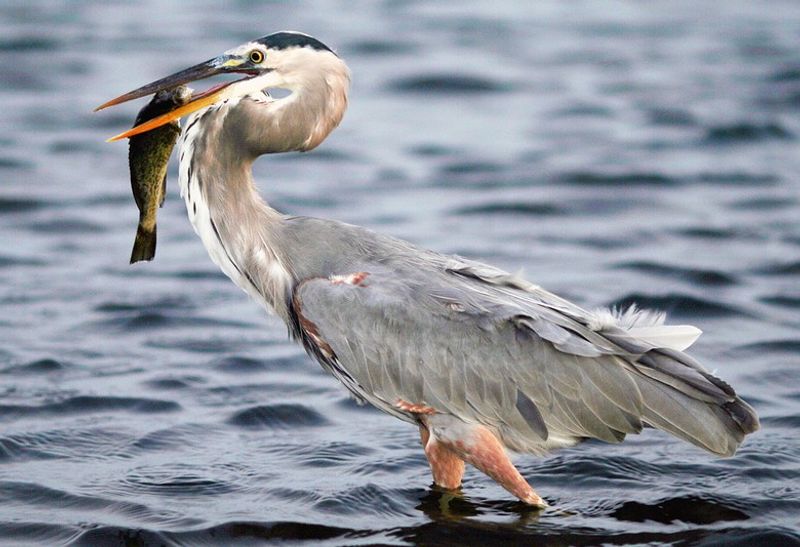
The great blue heron is a majestic bird, with a wingspan of up to 1.8 meters and a height of up to 1.2 meters, making it one of the larger wading birds in the world.
It is part of the heron family Ardeidae and can be found in numerous areas throughout North and Central America, South America, the Caribbean, and the Galápagos Islands.
These areas all have one thing in common, they are close to open water sources such as rivers, lakes, and wetlands. The great blue heron is commonly seen wading in the shallow waters near these areas, or in the wetlands themselves.
Its long, slender neck and legs make it an ideal bird for this type of habitat. It feeds on fish, frogs, and other small prey, and can be seen stalking its prey in the water with its long beak. The great blue heron is an excellent example of the beauty of nature.
Its long, graceful neck and wings make it a stunning sight to behold, and its presence is a reminder of the importance of preserving wetlands and open water sources.
| Kingdom | Animalia |
| Phylum | Chordata |
| Class | Aves |
| Order | Pelecaniformes |
| Family | Ardeidae |
| Genus | Ardea |
| Species | A. herodias |
2. Red-Winged Blackbird
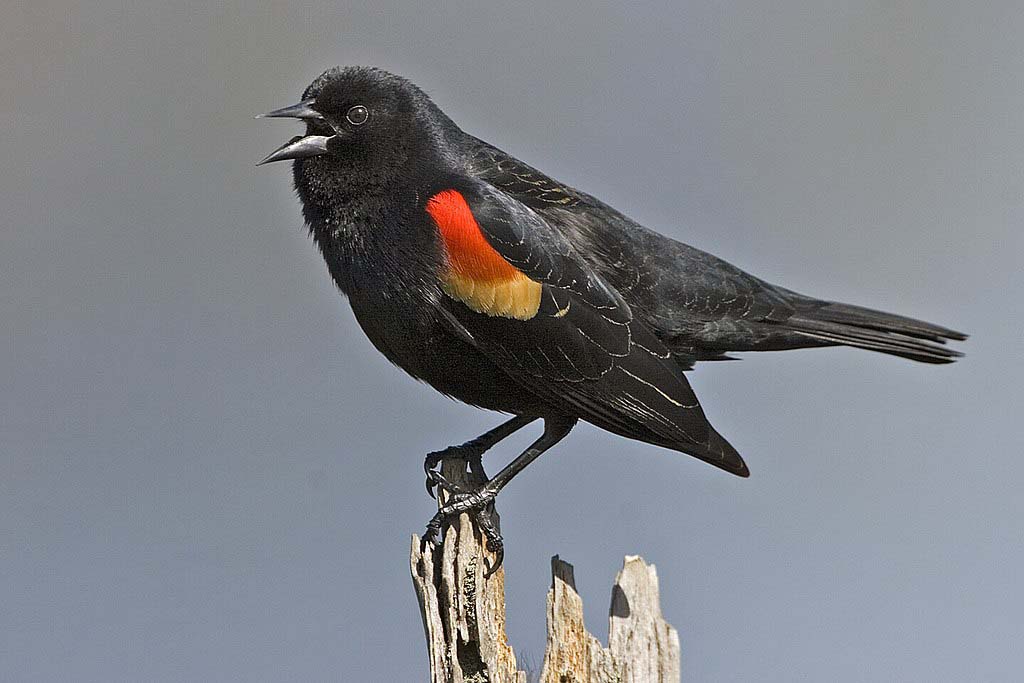
Source: Wikipedia
The red-winged blackbird is a species of bird found throughout North America and much of Central America. It is a passerine bird, which means it is a perching bird with strong claws and a sharp, pointed beak.
It is a member of the family Icteridae, which includes many of the blackbirds, orioles, meadowlarks, grackles, and cowbirds found in North America. The red-winged blackbird is one of the most abundant and well-known birds on the continent.
It is black in color with a distinctive red and yellow patch on its wings. The male red-winged blackbird is more colorful than the female, with bright yellow patches on its wings and a red shoulder patch.
The female is more subdued in color, with brown patches on its wings and a dull gray-brown body. The red-winged blackbird is an omnivorous bird, which means it eats both plants and animals. It feeds mainly on insects, seeds, and grains, as well as fruits and berries.
Its diet changes with the season, as it eats more insects in the summer and more grains and seeds in the winter. It also eats small frogs and other small animals.
The red-winged blackbird nests in marshes, wetlands, and other wet areas, building its nest from grass, weeds, and other plant material. The female lays 2-6 eggs and incubates them for 12-14 days. Both parents take care of the young birds until they are able to fly.
The red-winged blackbird is a common sight in North American wetlands, where it often gathers in large flocks. It is an important part of the wetland ecology, helping to keep the insect populations in check and dispersing the seeds of aquatic plants.
It is also an important source of food for many other animals, including hawks, owls, and other birds of prey.
| Kingdom | Animalia |
| Phylum | Chordata |
| Class | Aves |
| Order | Passeriformes |
| Family | Icteridae |
| Genus | Agelaius |
| Species | A. phoeniceus |
3. Little Blue Heron
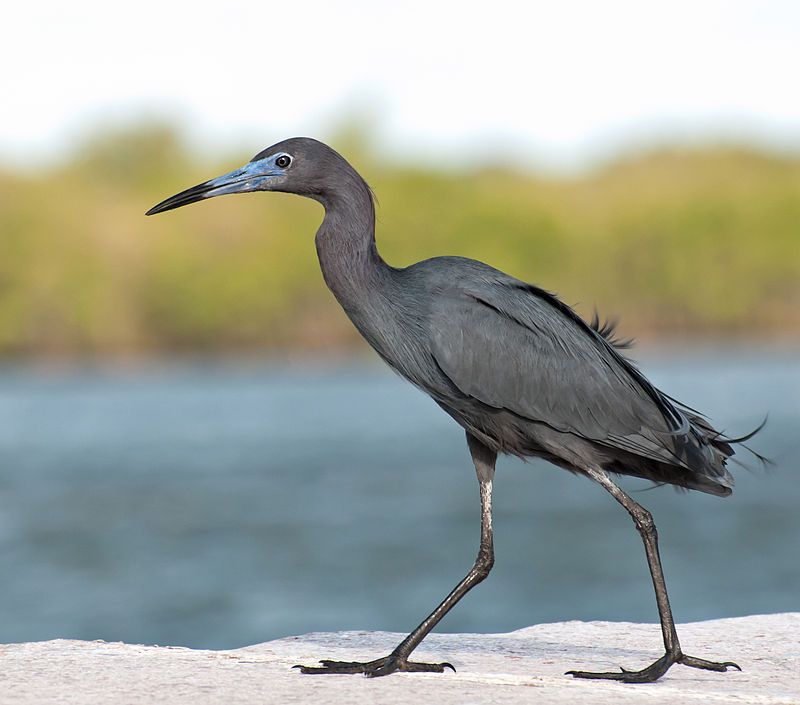
The little blue heron is a species of heron belonging to the Egretta genus. It is a small bird, usually dark in color, with a two-toned bill. Juveniles are completely white, bearing a strong resemblance to the snowy egret.
During the breeding season, the adult little blue heron’s head, legs, and feet become distinctive in color, usually a brighter blue or green. This color change is thought to be a form of courtship display, as the bright colors can be seen by potential mates from far away.
The little blue heron is a widely spread species, often found near wetlands, marshes, and rivers. It is a solitary bird, preferring to hunt and nest away from other herons.
| Kingdom | Animalia |
| Phylum | Chordata |
| Class | Aves |
| Order | Pelecaniformes |
| Family | Ardeidae |
| Genus | Egretta |
| Species | E. caerulea |
4. Green Heron
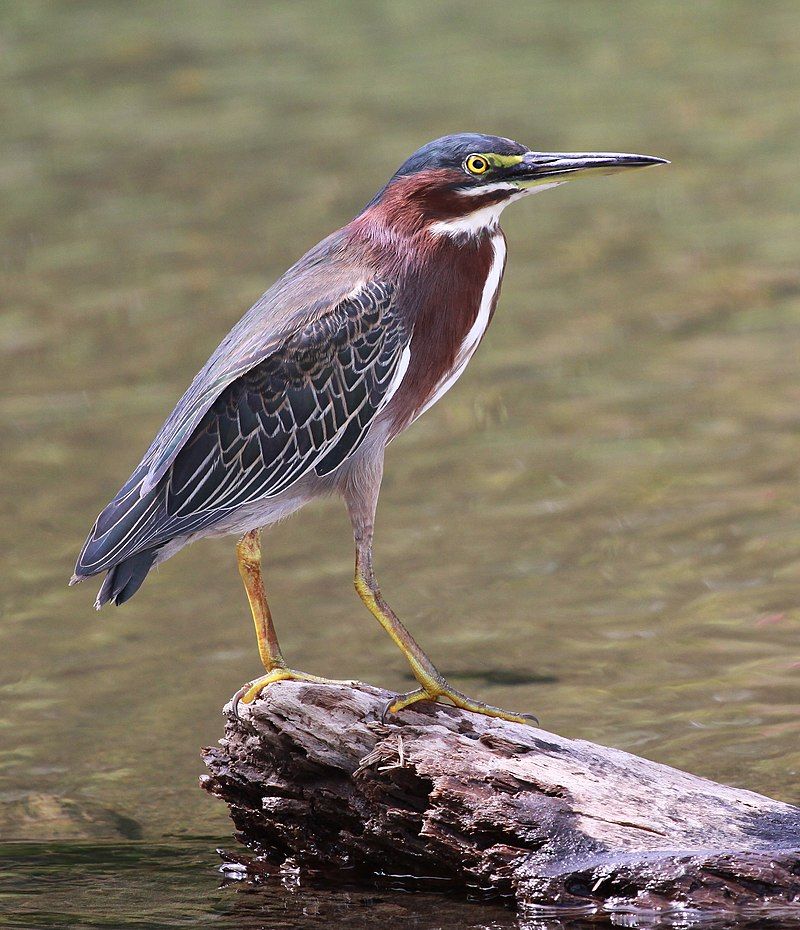
The green heron is a species of heron that is found in North and Central America. It belongs to the genus Butorides, which is derived from the Middle English word “butor” meaning “bittern” and the Ancient Greek suffix “-oides” meaning “resembling”.
The species name, virescens, is derived from the Latin word for “greenish” as this bird is predominantly green. Green herons typically have short necks and long legs, with a long pointed bill.
The feathers are predominantly green with some black and white markings, and they can reach up to a meter in length. They mostly inhabit wetlands, such as swamps, marshes, and ponds, where they search for their prey.
Green herons feed primarily on small fish, amphibians, and invertebrates, which they catch using their bill or by standing still and waiting for them to come close. Green herons are solitary birds that are mostly active during the day.
They are often seen perched on branches and posts in wetlands or flying low over the water in search of prey. During the breeding season, they build nests in trees and shrubs close to the water, and they usually lay between two to five eggs.
Overall, the green heron is a fascinating species of heron that is found in both North and Central America.
Its scientific name reflects its physical characteristics, with its genus derived from Middle English and Ancient Greek, and its species name coming from Latin for “greenish”.
This species is well adapted to its wetland environment, and it is a fascinating sight to see them hunting for their prey.
| Kingdom | Animalia |
| Phylum | Chordata |
| Class | Aves |
| Order | Pelecaniformes |
| Family | Ardeidae |
| Genus | Butorides |
| Species | B. virescens |
5. Black-Crowned Night Heron
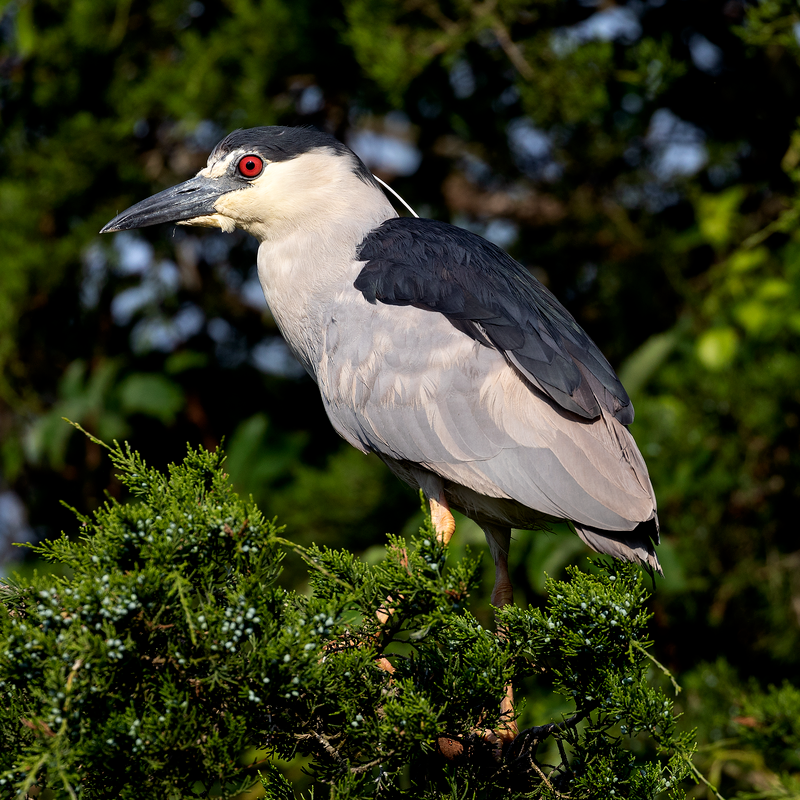
The black-crowned night heron, or black-capped night heron, is a species of heron found all over the world. It is a medium-sized bird, ranging from 24 to 26 inches in length and weighing between 2 and 3.5 pounds.
It is most commonly referred to simply as the night heron in Eurasia. Its black crown, which gives it its name, is what makes it stand out among other birds.
The rest of its body is grey with a white underside, giving it excellent camouflage in its natural habitats. The black-crowned night heron can be found in parts of Europe, Asia, North America, and South America.
It prefers to inhabit wetlands, such as marshes, swamps, and slow-moving rivers. It is nocturnal, only being active at night and resting during the day.
It feeds primarily on small fish and amphibians that it catches from the water’s surface. This bird is a solitary species and usually only pairs up during the breeding season. Its diet includes small fish, crustaceans, and other aquatic animals.
During the breeding season, the male and female will build a nest in trees or shrubs. They lay eggs that are incubated by both parents until they hatch. The black-crowned night heron is an important species for its role in helping to keep aquatic ecosystems balanced.
Its diet helps control the population of certain prey species, which helps to maintain balance in the area. It is also a popular bird for birdwatchers since it can be found in many parts of the world.
| Kingdom | Animalia |
| Phylum | Chordata |
| Class | Aves |
| Order | Pelecaniformes |
| Family | Ardeidae |
| Genus | Nycticorax |
| Species | N. nycticorax |
6. Roseate Spoonbill
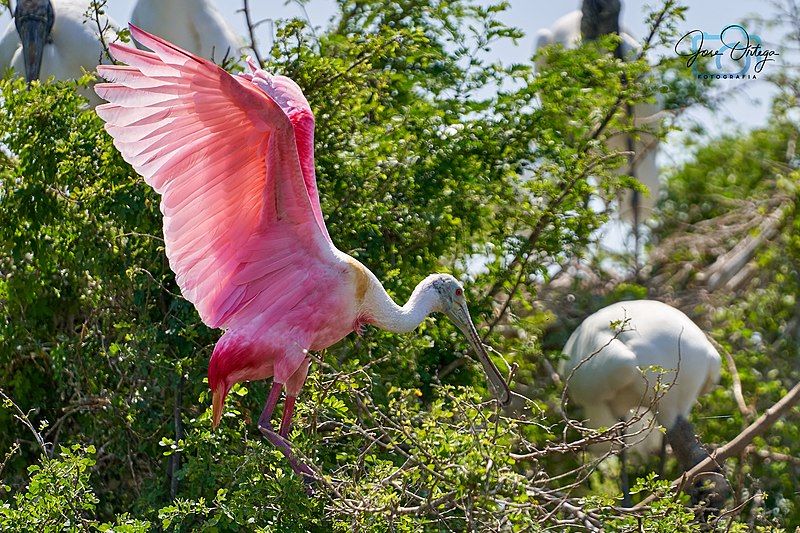
The roseate spoonbill is a species of bird belonging to the Threskiornithidae family, commonly known as ibises and spoonbills. It is a migratory species, breeding and residing in both South and North America.
This species of bird is easily recognizable due to its pink coloration, which is derived from its diet. The color is a result of the carotenoid pigment, canthaxanthin, which is also seen in the American flamingo.
The roseate spoonbill is a gregarious species, meaning that they often form large flocks when searching for food or nesting. They are most commonly found near coastal areas, where they wade in shallow waters to feed.
As well as being an important part of the coastal ecosystem, the roseate spoonbill is an iconic species in the Americas, with its vibrant coloring and distinctive bill shape.
| Kingdom | Animalia |
| Phylum | Chordata |
| Class | Aves |
| Order | Pelecaniformes |
| Family | Threskiornithidae |
| Genus | Platalea |
| Species | P. ajaja |
7. Yellow-Crowned Night Heron
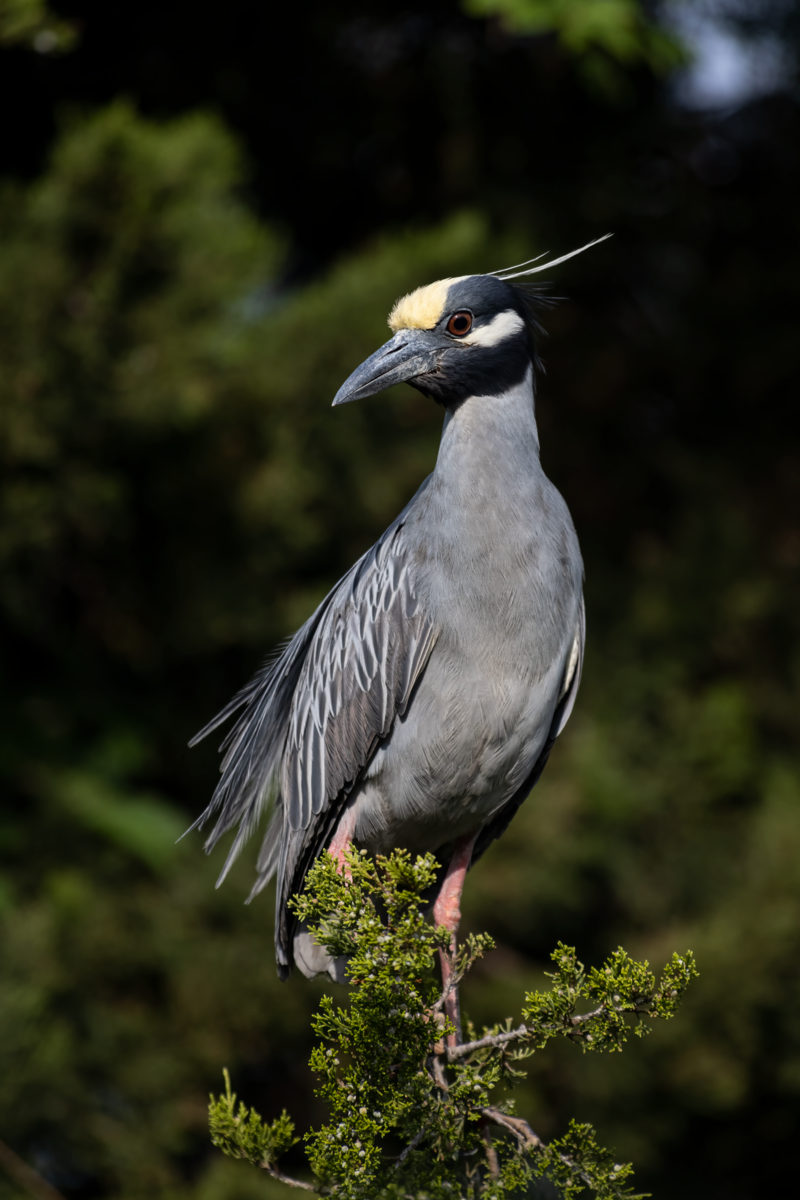
The yellow-crowned night heron is a species of heron in the genus Nyctanassa that is found exclusively in the Americas. It is distinguishable from the black-crowned night heron due to the bright yellow crown on its head, which is absent in the black-crowned species.
The yellow-crowned night heron is known by a variety of names, including bihoreau violacé in French and pedrete corona Clara in Spanish.
This species is found in wetlands, coastal areas, and urban parks throughout the Americas, where it feeds on a variety of small creatures, such as crustaceans, insects, and small fish.
| Kingdom | Animalia |
| Phylum | Chordata |
| Class | Aves |
| Order | Pelecaniformes |
| Family | Ardeidae |
| Genus | Nyctanassa |
| Species | N. violacea |
8. Brown Pelican
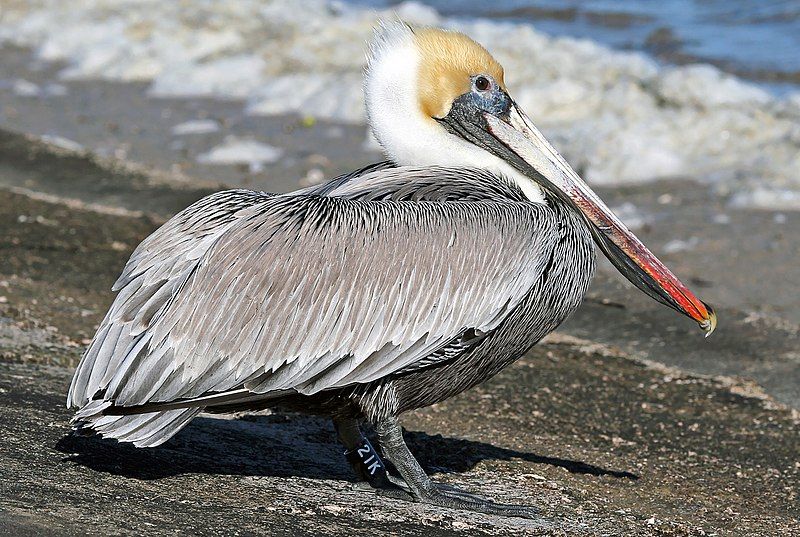
The brown pelican is a unique bird of the pelican family, Pelecanidae. It is found in the Americas and is one of three species in its family that are known to inhabit the area. The brown pelican stands out from other birds in its family due to its unique feeding methods.
It is one of two species of pelicans that feed by diving into the water. This method of feeding involves the bird swooping down from the sky and plunging its head and beak into the water to capture fish and other aquatic prey.
This way, the brown pelican can catch a wide variety of food, which helps it to survive in its environment. It is an efficient and effective way of obtaining food, and it works well for the brown pelican.
| Kingdom | Animalia |
| Phylum | Chordata |
| Class | Aves |
| Order | Pelecaniformes |
| Family | Pelecanidae |
| Genus | Pelecanus |
| Species | P. occidentalis |
9. Wood Duck
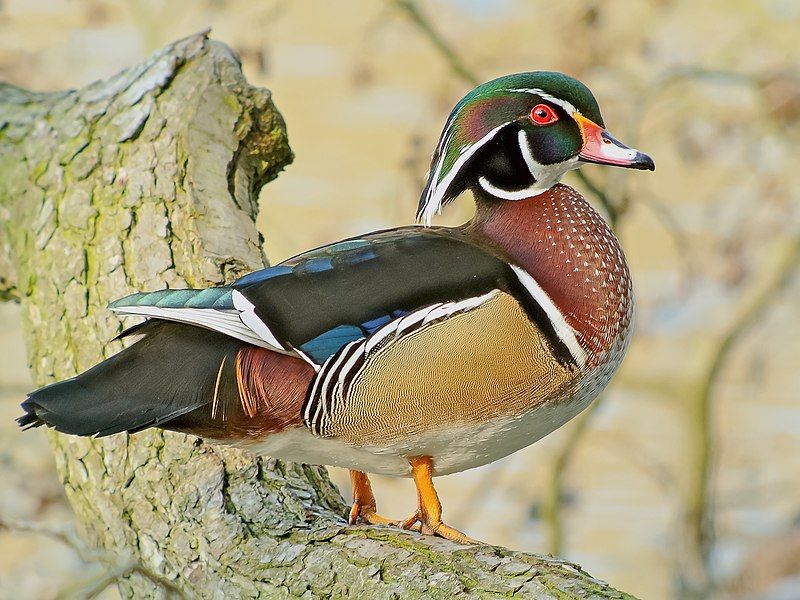
The wood duck, also known as the Carolina duck, is a species of perching duck native to North America. It is a medium-sized duck that typically resides in wooded swamps, shallow lakes, marshes, and ponds. The Drake wood duck is known for its colorful plumage.
The male wood duck has a unique head pattern with a greenish-blackish crown, bright red eyes, and white cheeks. The body is mostly brownish in color with white scalloping along the sides.
In addition, the drake wood duck has a bright yellow bill and a chestnut-colored neck and breast. The female wood duck is less colorful than the drake, having a brownish body with white-tipped wings and a grayish-brown head.
Despite its colorful plumage, the wood duck is well camouflaged in its preferred habitats. The wood duck is a popular game bird and is widely hunted in North America.
| Kingdom | Animalia |
| Phylum | Chordata |
| Class | Aves |
| Order | Anseriformes |
| Family | Anatidae |
| Genus | Aix |
| Species | A. sponsa |
10. Baird’s Sandpiper
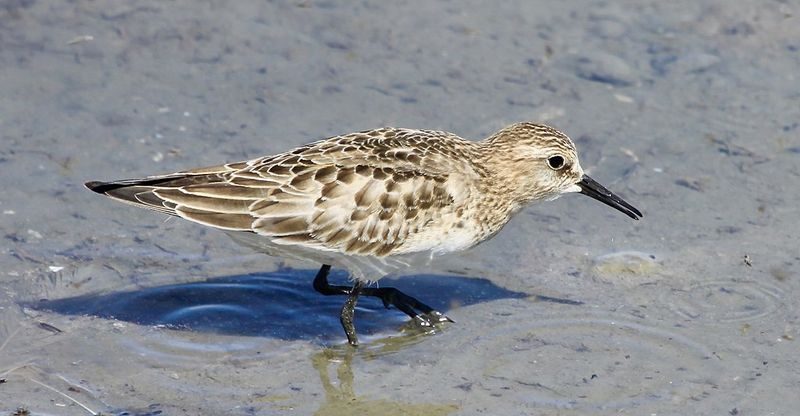
Baird’s sandpiper is a small shorebird that belongs to a family of birds known as calidrids. Until 1973, the species was classified within the genus Erolia, however, it was then subsumed into the genus Calidris.
The word Calidris is derived from Ancient Greek and is a combination of the words kalidris and skalidris. These two words were used by the famous philosopher Aristotle to refer to grey-colored birds found near bodies of water.
Baird’s sandpiper is an excellent example of this type of bird, as it is small, grey in color, and prefers to inhabit areas near the shore.
| Kingdom | Animalia |
| Phylum | Chordata |
| Class | Aves |
| Order | Charadriiformes |
| Family | Scolopacidae |
| Genus | Calidris |
| Species | C. bairdii |
11. Snowy Egret
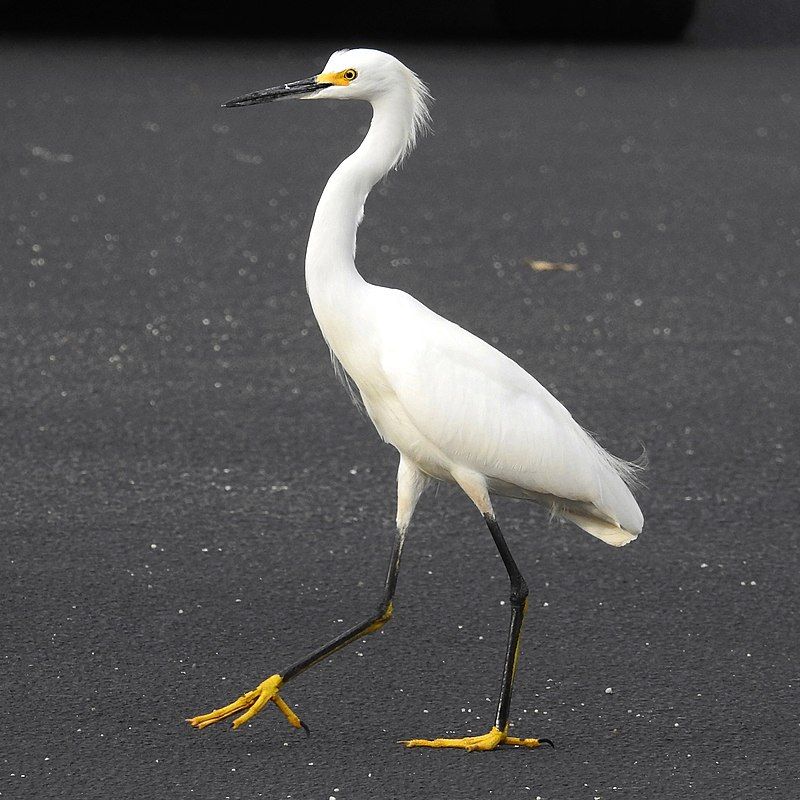
The snowy egret is a small white heron belonging to a genus called “Aigrette”, which is a diminutive of the word “Aigron” which in Provençal French means “heron”. The species name “thula” is derived from the Araucano term for the black-necked swan.
This name was mistakenly applied to the snowy egret by Chilean naturalist Juan Ignacio Molina in 1782. The snowy egret is a unique bird, with its white feathers and slender body.
It is a popular species of bird that can be found in marshes, swamps, and other wetlands across the Americas. Its diet consists mainly of small fish and insects, and it is known for its bright yellow feet and long, curved bill.
The snowy egret is a protected species and is classified as “least concern” on the IUCN Red List of Threatened Species.
| Kingdom | Animalia |
| Phylum | Chordata |
| Class | Aves |
| Order | Pelecaniformes |
| Family | Ardeidae |
| Genus | Egretta |
| Species | E. thula |
12. Ardea Alba
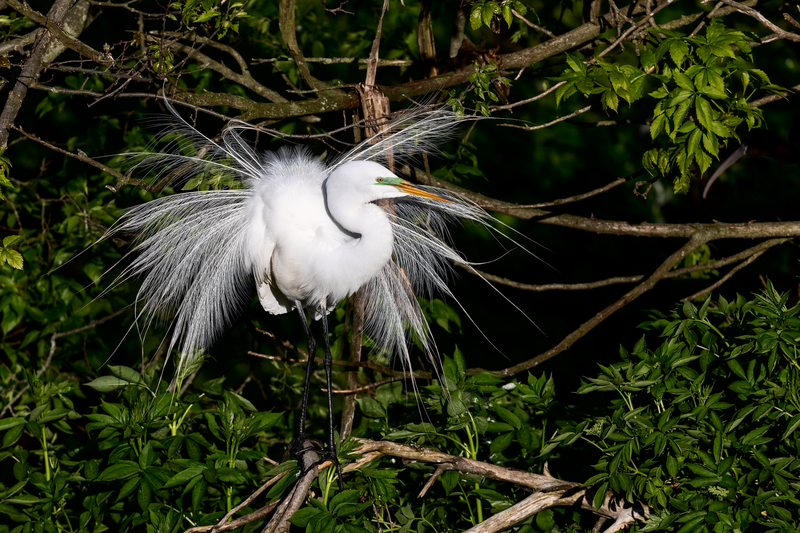
The great egret is a large, widely distributed species of egret, with four subspecies found in various areas around the world. In Asia, Africa, and the Americas, the great egret can be found inhabiting wetlands, marshes, and coastal areas.
In southern Europe, it is a common sight in waterways and near the shoreline.
Recently, the great egret has been seen in more northern areas of Europe, suggesting that its range is expanding. The great egret is also known by many other names, such as the common egret, large egret, great white egret, or great white heron.
It has a distinctive white plumage and can be recognized by its long neck, long legs, and yellow bill. The great egret feeds on a variety of aquatic prey, such as fish, amphibians, and invertebrates.
It is an important part of many wetland ecosystems, providing vital services such as pest control and nutrient cycling. Overall, the great egret is a species of great beauty and importance, and its presence is an indicator of a healthy wetland.
Its ability to adapt to new environments and its increasing range suggest that the great egret will continue to play an important role in many ecosystems for years to come.
| Kingdom | Animalia |
| Phylum | Chordata |
| Class | Aves |
| Order | Pelecaniformes |
| Family | Ardeidae |
| Genus | Ardea |
| Species | A. alba |
13. Bald Eagle
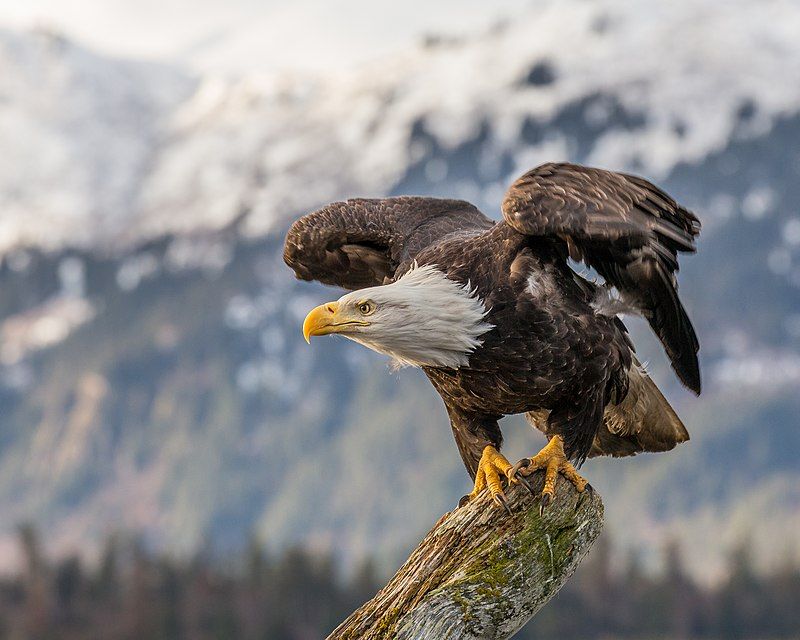
The bald eagle is a majestic bird of prey native to North America. It is a sea eagle, meaning that it spends much of its time around large bodies of water such as lakes, rivers, and coasts.
There are two known subspecies of the bald eagle, the northern bald eagle and the southern bald eagle, which are found in different parts of the continent. Interestingly, the bald eagle has a species pair in the Palearctic, which is the white-tailed eagle.
The white-tailed eagle is found in the Palearctic region and occupies the same niche as the bald eagle does in North America. This means that the two species are similar in size and appearance, as well as their habitat and diet.
As top predators in their respective regions, they play a crucial role in their ecosystems, helping to maintain the balance of nature.
| Kingdom | Animalia |
| Phylum | Chordata |
| Class | Aves |
| Order | Accipitriformes |
| Family | Accipitridae |
| Genus | Haliaeetus |
| Species | H. leucocephalus |
14. Anhinga Anhinga
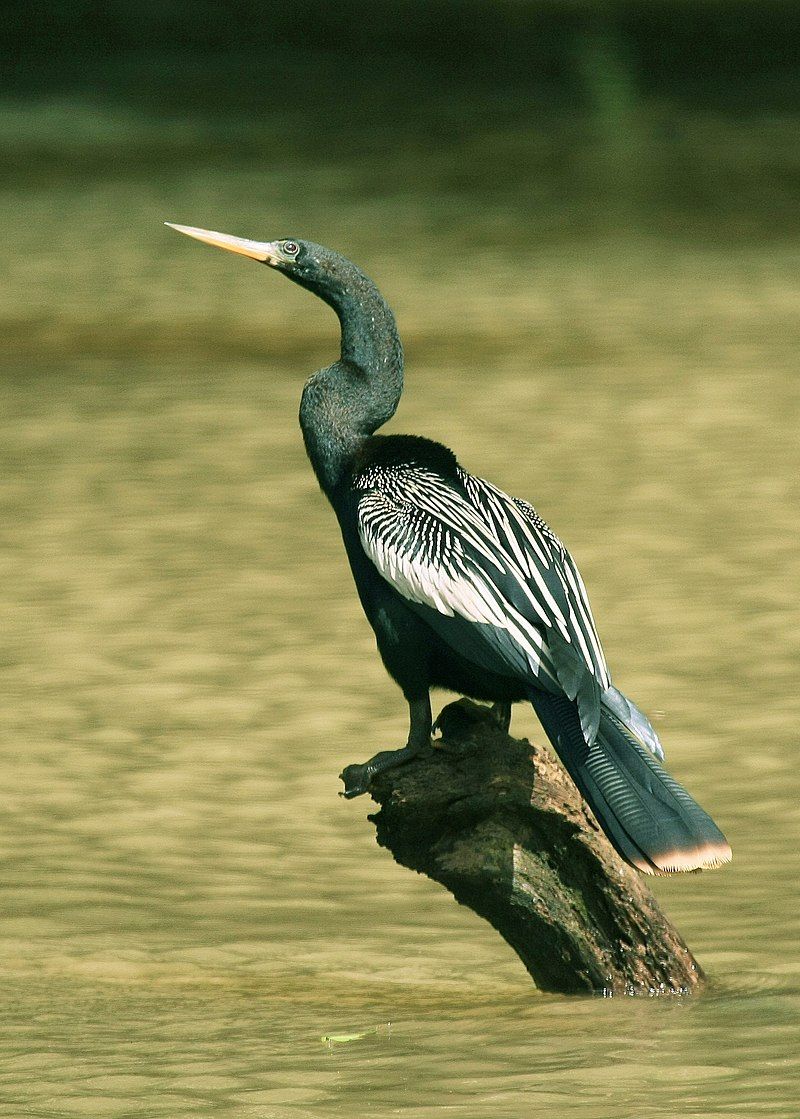
The Anhinga is a unique type of water bird found in the warmer parts of the Americas. It has many different names, including snakebird, darter, American darter, and water turkey.
The word anhinga is derived from the Brazilian Tupi language and literally translates to “devil bird” or “snake bird”. This name references the bird’s long, slender body and neck, which is reminiscent of a snake.
The Anhinga is a fairly large bird, usually measuring between 18 to 24 inches in length and weighing up to two pounds. They have a black or dark brown body with white underside, long wings, and a long tail.
The most distinctive feature of the Anhinga is its long, thin neck which it uses to spear its prey underwater. This bird is often seen perched atop a dead tree or floating on the surface of the water with its wings outstretched to dry off.
The Anhinga is a carnivorous bird that feeds mostly on fish, amphibians, and reptiles. It is a solitary hunter, usually stalking its prey from a tree or swimming underwater. It uses its sharp, hooked bill to stab its prey and then brings it to the surface to swallow.
The Anhinga is an important part of the local ecosystem in the Americas. It helps to keep populations of smaller water animals in check and also provides important food sources for other birds, mammals, and reptiles.
It is also an important part of the culture of many indigenous people in the Americas and is often featured in mythology and legends.
| Kingdom | Animalia |
| Phylum | Chordata |
| Class | Aves |
| Order | Suliformes |
| Family | Anhingidae |
| Genus | Anhinga |
| Species | A. anhinga |
15. Osprey
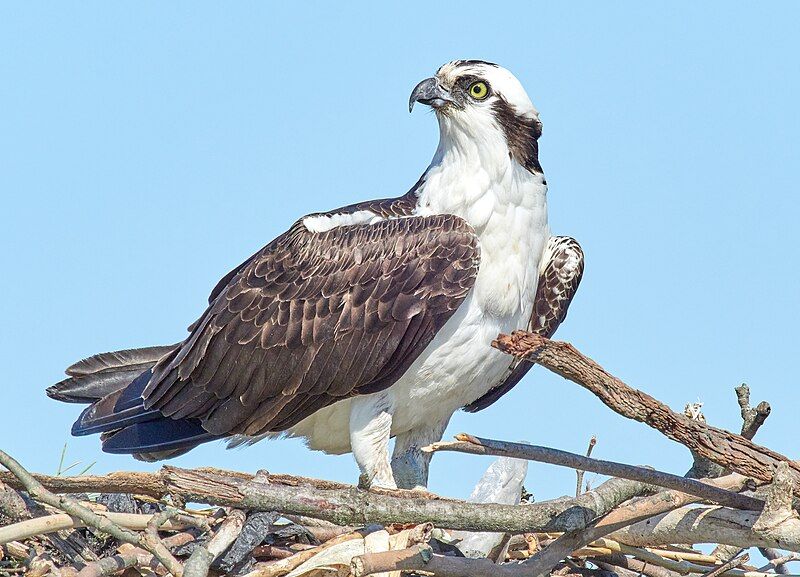
The Osprey is a majestic bird of prey that is found in many different countries around the world. Its scientific name is Pandion haliaetus, and it is commonly known as the sea hawk, river hawk, or fish hawk due to its preferred diet of fish.
It is a diurnal bird, meaning that it is most active during the day. The osprey is a large raptor, with its body measuring up to 60 cm in length and its wings reaching 180 cm across, making it one of the world’s largest birds of prey.
It has a distinctive coloring, with brown on the upperparts and greyish feathers on its head and underparts. The osprey has an impressive wingspan and is a powerful flier, able to soar through the air with ease.
It uses its sharp talons to hunt for fish in the water, often hovering high above the surface before diving headfirst into the water in pursuit of its prey. In addition to its impressive physical abilities, the osprey is also known for its intelligence.
It is capable of learning and adapting to new environments, making it an incredibly successful species. It is an important part of many different ecosystems and its presence in an area is often indicative of a healthy ecosystem.
| Kingdom | Animalia |
| Phylum | Chordata |
| Class | Aves |
| Order | Accipitriformes |
| Family | Pandionidae |
| Genus | Pandion |
| Species | P. haliaetus |
16. Belted Kingfisher
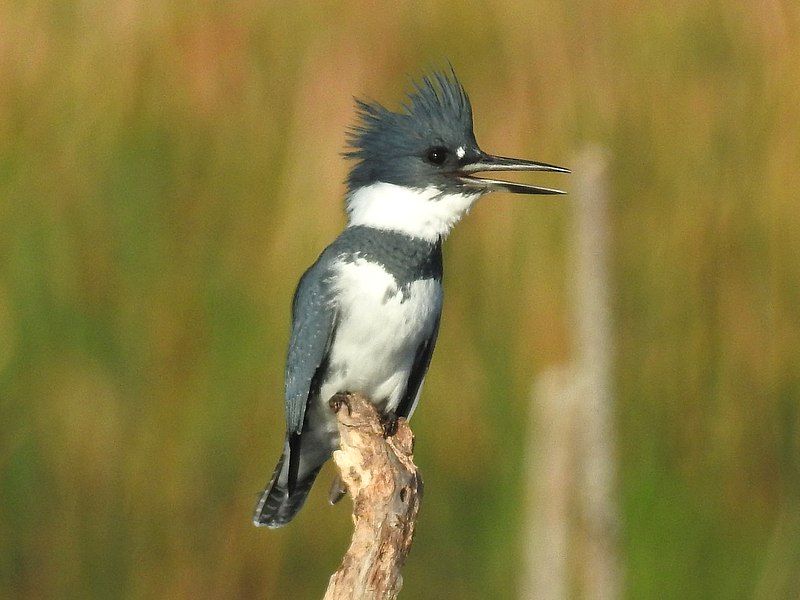
The belted kingfisher is a large, bright blue bird that is native to North America. This bird is a member of the water kingfisher family, Alcedinidae, which is composed of several species that live near bodies of water.
Traditionally, all members of this family were grouped together, but recent research suggests that it should be divided into three distinct subfamilies.
The belted kingfisher is part of the Cerylinae subfamily, which consists of kingfishers found in Eurasia, Africa, and the Americas. The other two subfamilies, Alcedininae and Halcyoninae, are both composed of kingfishers found in Africa and Asia.
By dividing the family into subfamilies, researchers are better able to study and understand the characteristics of each species of kingfisher.
This is important because, although these birds all share a similar appearance, there are subtle differences between them that can affect their behavior and ecology.
| Kingdom | Animalia |
| Phylum | Chordata |
| Class | Aves |
| Order | Coraciiformes |
| Family | Alcedinidae |
| Genus | Megaceryle |
| Species | M. alcyon |
17. Mourning Dove
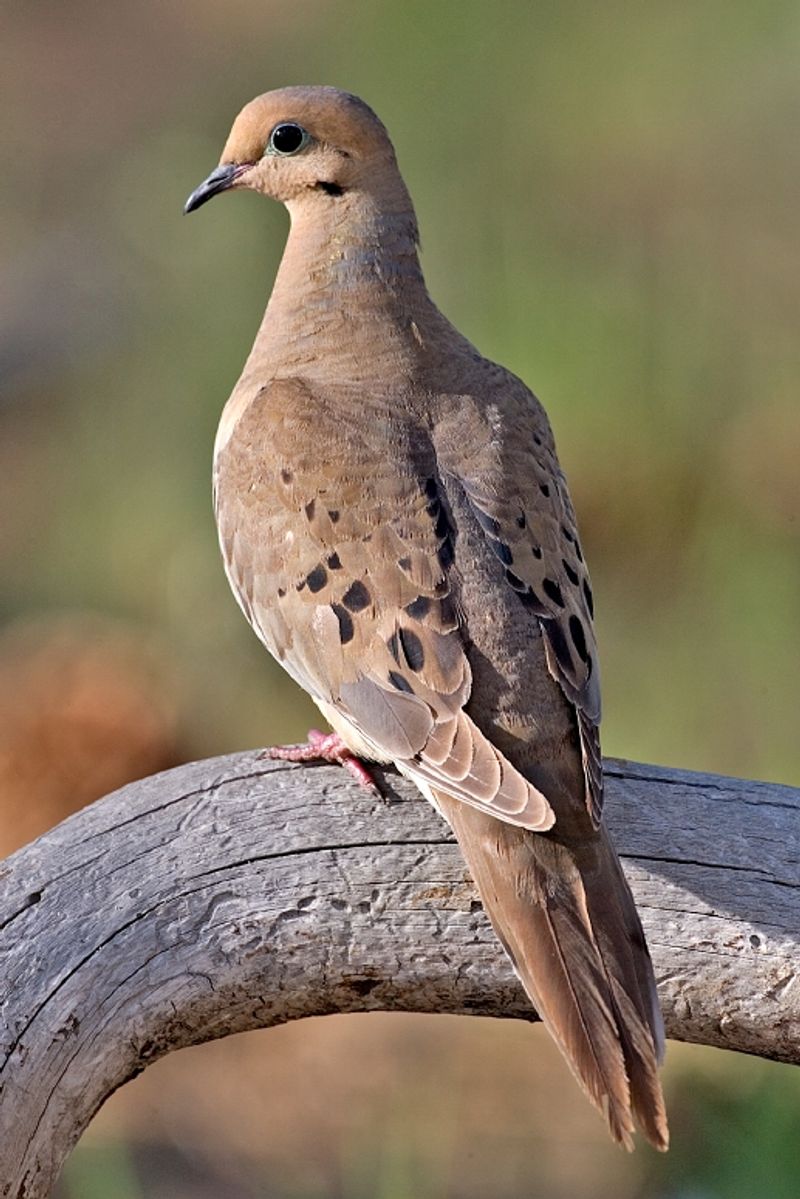
The mourning dove is a type of bird belonging to the family Columbidae. It is commonly referred to as the American mourning dove, the rain dove, or colloquially as the turtle dove. It has also previously been referred to as the Carolina pigeon and Carolina turtledove.
The mourning dove is a medium-sized bird, typically ranging between 10 and 14 inches in length, and is characterized by its long, pointed tail, and its grayish-brown coloration. Its wings produce a whistling sound when in flight, which is how it got its name.
It is a ground-feeding bird, known to eat seeds, fruits, and insects. They are also known to have a distinct cooing call, which can be heard from long distances.
The mourning dove is widely distributed across North America and is one of the most abundant and widespread bird species in the world.
| Kingdom | Animalia |
| Phylum | Chordata |
| Class | Aves |
| Order | Columbiformes |
| Family | Columbidae |
| Genus | Zenaida |
| Species | Z. macroura |
18. Acorn Woodpecker
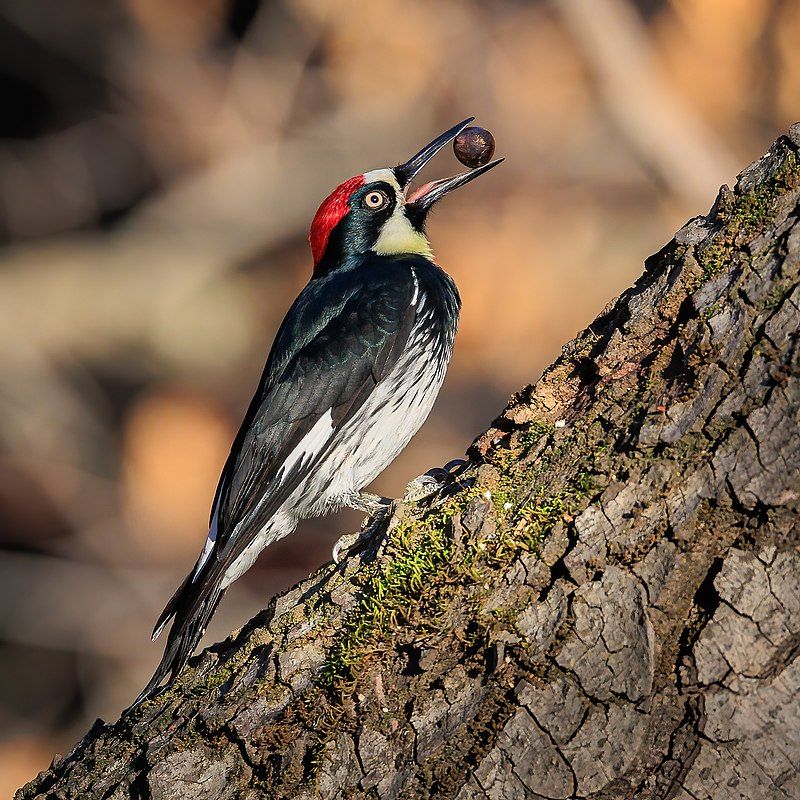
The acorn woodpecker is a bird species that can be found in parts of western North America. It is a medium-sized woodpecker, measuring approximately 21 centimeters in length and an average weight of 85 grams.
This woodpecker is easily identifiable by its striking black and white plumage, its red head, and its white wings. It also has a yellow patch on its throat and a red patch on its belly.
The acorn woodpecker is a cavity-nester, meaning it builds its nests in tree cavities or in holes it drills into trees. It is an omnivorous bird, feeding mostly on insects, acorns, nuts, seeds, fruits, and berries.
It is also known to store large amounts of acorns in a single tree, up to thousands of them. This behavior is called “granivory” and is beneficial to its survival as it can provide food during the winter months.
The acorn woodpecker is an important member of the ecosystem as it helps to disperse the seeds of various plants, thus helping to regenerate the vegetation in its habitat.
| Kingdom | Animalia |
| Phylum | Chordata |
| Class | Aves |
| Order | Piciformes |
| Family | Picidae |
| Genus | Melanerpes |
| Species | M. formicivorus |
19. Red-Bellied Woodpecker
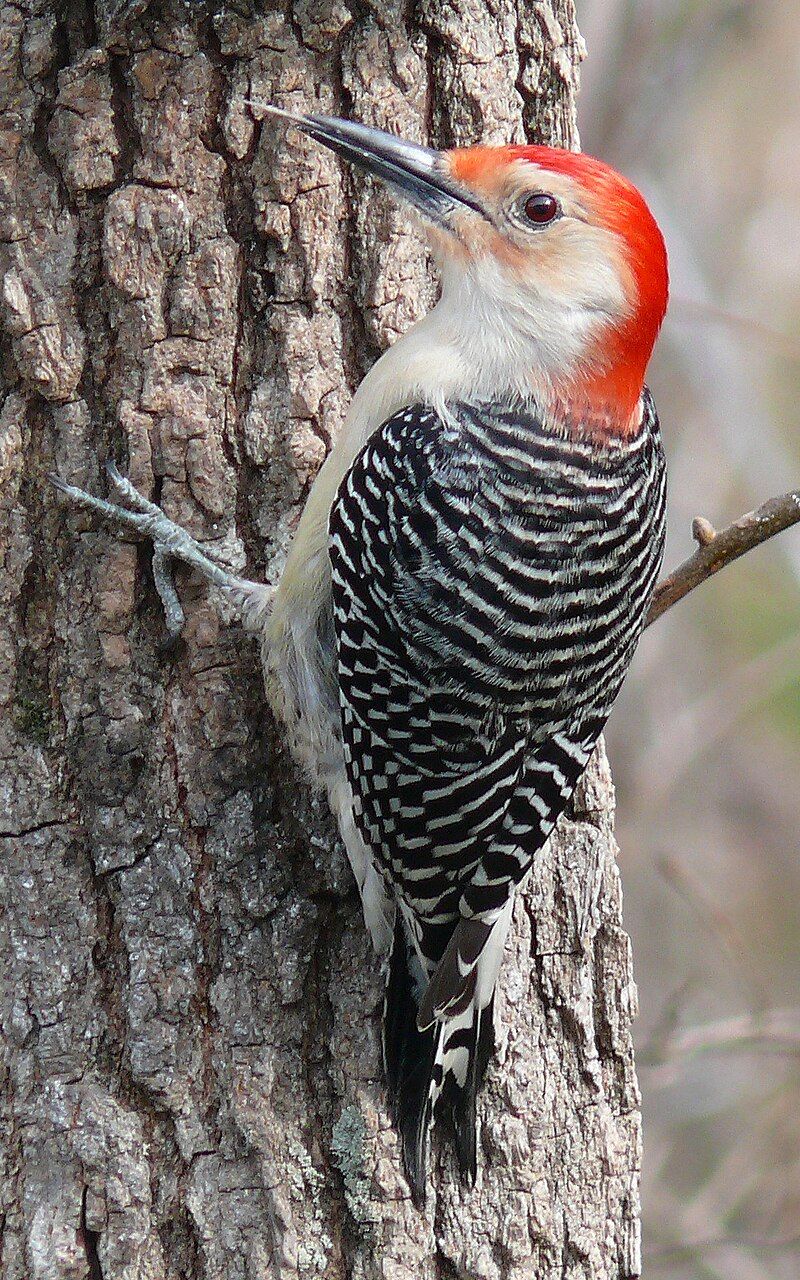
The red-bellied woodpecker is a type of woodpecker that is found in the family Picidae. It is a medium-sized bird, with a length of about 8-9 inches. It has a bright red head, upper back, and wings, and a light gray body.
It is commonly found in the eastern United States, typically ranging from Florida in the south, all the way up to Canada in the north. The red-bellied woodpecker can also be found in parts of Mexico, and in some areas of the Caribbean.
It prefers to inhabit wooded areas, such as deciduous and mixed forests, but may also be seen in suburban and urban areas. It feeds mainly on insects and their larvae, but will also eat nuts, seeds, fruit, and sap.
The red-bellied woodpecker is an important species of the family Picidae, as it helps to control insect populations that can damage trees. It often nests in cavities in trees, and is a very vocal bird, making loud, ringing calls.
It is important to note that this species is not endangered, and its numbers are stable.
| Kingdom | Animalia |
| Phylum | Chordata |
| Class | Aves |
| Order | Piciformes |
| Family | Picidae |
| Genus | Melanerpes |
| Species | M. carolinus |
20. White-Winged Dove
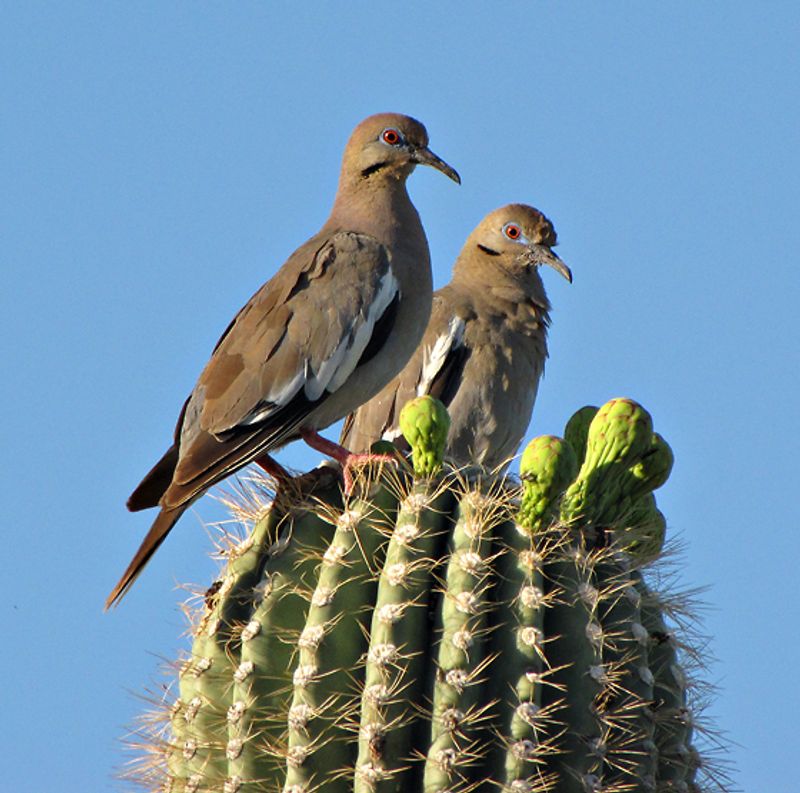
The white-winged dove is a species of dove found in the Southwestern United States, Mexico, Central America, and the Caribbean. It stands out among other doves due to its distinct white wing edging, which is visible against its otherwise grey body.
Its other distinguishing features include a blue eye ring and red eyes. In terms of size, the white-winged dove is larger than most other dove species.
Its diet mostly consists of seeds and other plant material, and it is known to nest in trees and shrubs, building its nests out of twigs and other materials. It is an active bird throughout the day, but it is most active during the early morning and late afternoon.
Its call is a low, cooing sound, and it can sometimes be heard in the still of the night. The white-winged dove is an important part of the ecosystems of its native range, as it serves as an important food source for many predators and scavengers.
It is also an important species for birdwatchers, as its presence in a given location serves as an indicator of a healthy ecosystem.
| Kingdom | Animalia |
| Phylum | Chordata |
| Class | Aves |
| Order | Columbiformes |
| Family | Columbidae |
| Genus | Zenaida |
| Species | Z. asiatica |
21. Pileated Woodpecker
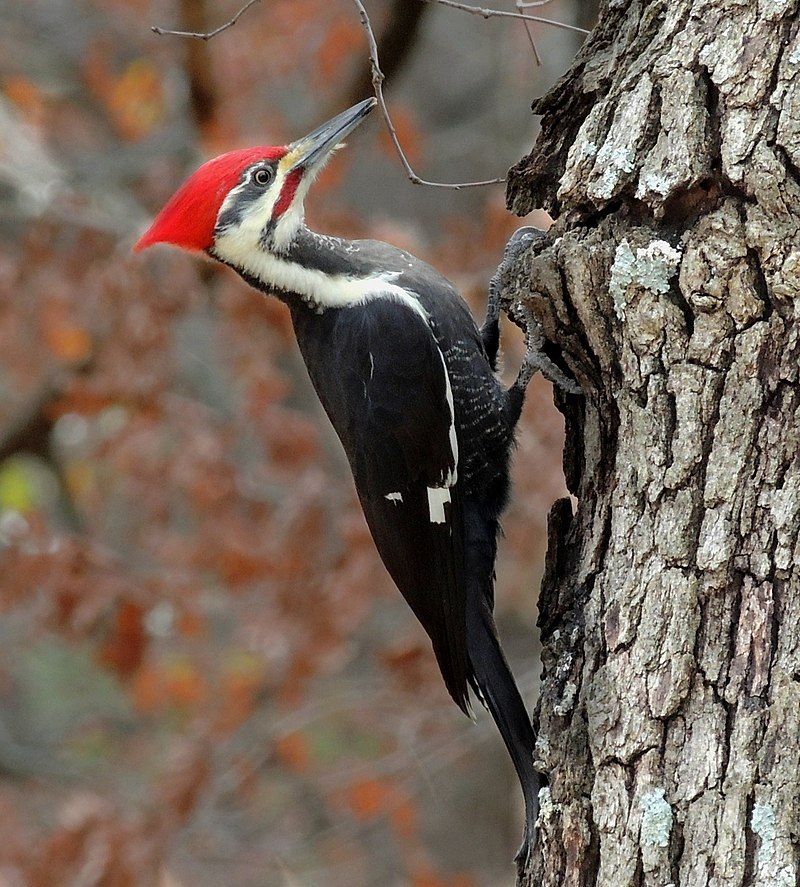
The pileated woodpecker is an impressive bird native to North America. It is mostly black, with a bright red crest, white stripes along its wings, and a long, white bar on its neck. It is the largest woodpecker on the continent, measuring up to 19 inches in length.
The pileated woodpecker is an insectivore, meaning that its diet consists mainly of insects and their larvae.
It can be found in various habitats, including deciduous forests in the eastern part of the continent, the Great Lakes region, the boreal forests of Canada, and parts of the Pacific Coast. It uses its large, sharp beak to excavate wood in order to find food.
During the summer, it will often hammer loudly on dead trees to attract mates and mark its territory. The pileated woodpecker is an important part of the ecosystem, as it helps to control insect populations and helps to spread tree seeds.
| Kingdom | Animalia |
| Phylum | Chordata |
| Class | Aves |
| Order | Piciformes |
| Family | Picidae |
| Genus | Dryocopus |
| Species | D. pileatus |
22. Pectoral Sandpiper
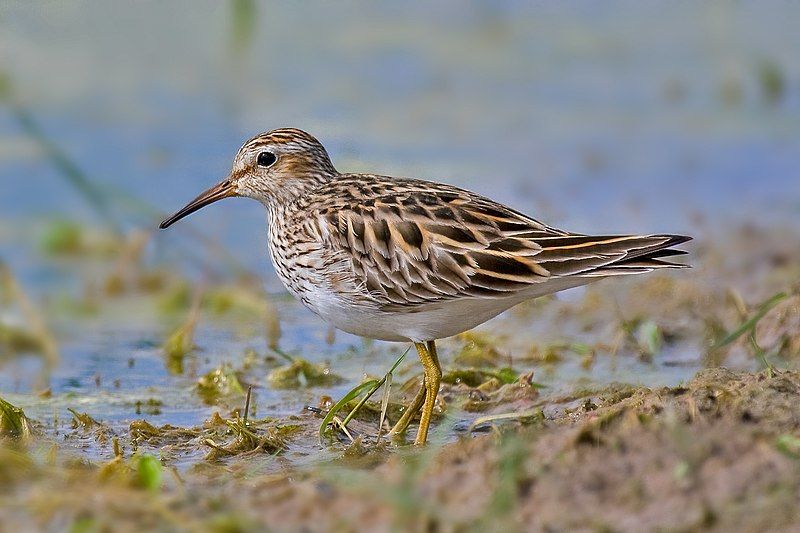
The pectoral sandpiper is a small migratory bird that belongs to the Wader family. It is native to parts of North America and Asia and travels to South America and Oceania during the winter months. Its diet consists of small invertebrates, which it finds in its natural habitat.
It builds its nests by digging a hole in the ground and lining it with a thick material to provide insulation. The nest is designed to keep the four eggs it lays safe from the cold winds that blow in its breeding grounds.
The bird has adapted to its environment in order to protect its young. The pectoral sandpiper is an interesting creature and an essential part of its ecosystem.
| Kingdom | Animalia |
| Phylum | Chordata |
| Class | Aves |
| Order | Charadriiformes |
| Family | Scolopacidae |
| Genus | Calidris |
| Species | C. melanotos |
23. Double-Crested Cormorant
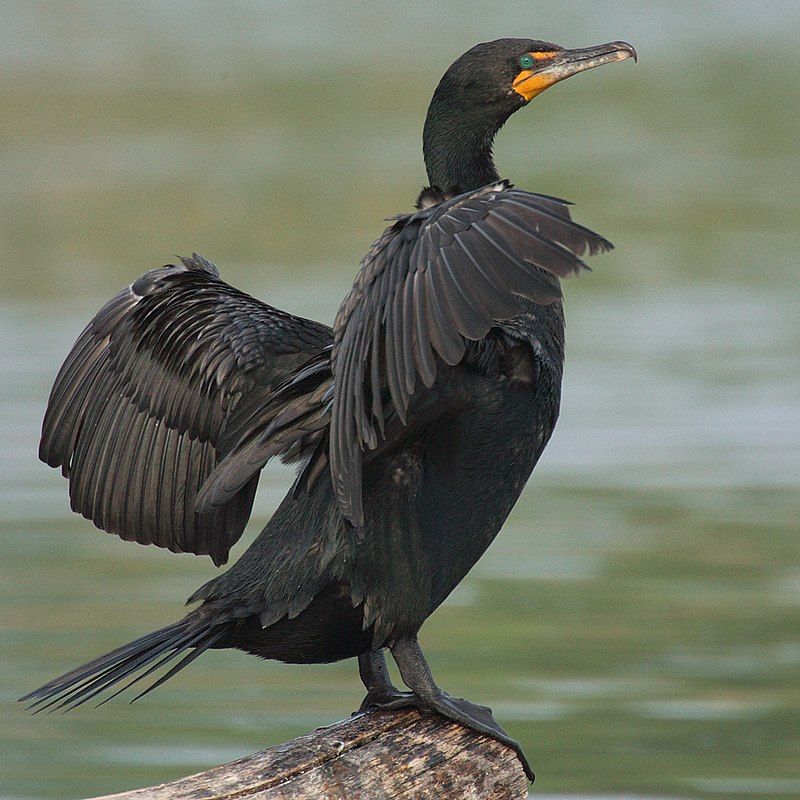
The double-crested cormorant is a member of the cormorant family of water birds and is easily identifiable by its two crests. It can be found in a wide range of habitats, from rivers and lakes to coastal areas.
The bird is native to North America, with its range stretching from the Aleutian Islands in Alaska all the way down to Florida and Mexico. It is a highly adaptable bird, able to thrive in a variety of different climates.
This species is a social bird, often found in large groups, and is a strong swimmer, spending much of its time on or near the water. It is a powerful hunter, using its sharp eyesight to spot its prey, and its hooked bill to catch and eat it.
The double-crested cormorant is an important species in the North American ecosystem and is an example of the resilience of nature.
| Kingdom | Animalia |
| Phylum | Chordata |
| Class | Aves |
| Order | Suliformes |
| Family | Phalacrocoracidae |
| Genus | Nannopterum |
| Species | N. auritum |
Conclusion
Lafayette is a great place to observe birds. It offers a variety of habitats that provide a home to many species of birds, from the familiar backyard birds to the more unusual species.
With the nearby wetlands, rivers, and forests, Lafayette is a paradise for birdwatchers and nature lovers alike. Whether you’re looking for a leisurely walk to observe the birds or a more in-depth exploration, Lafayette has something for everyone.